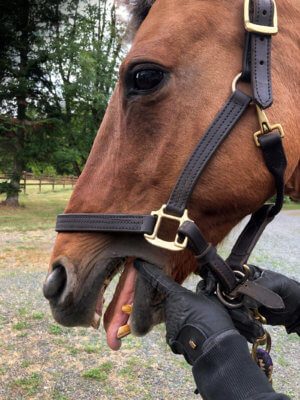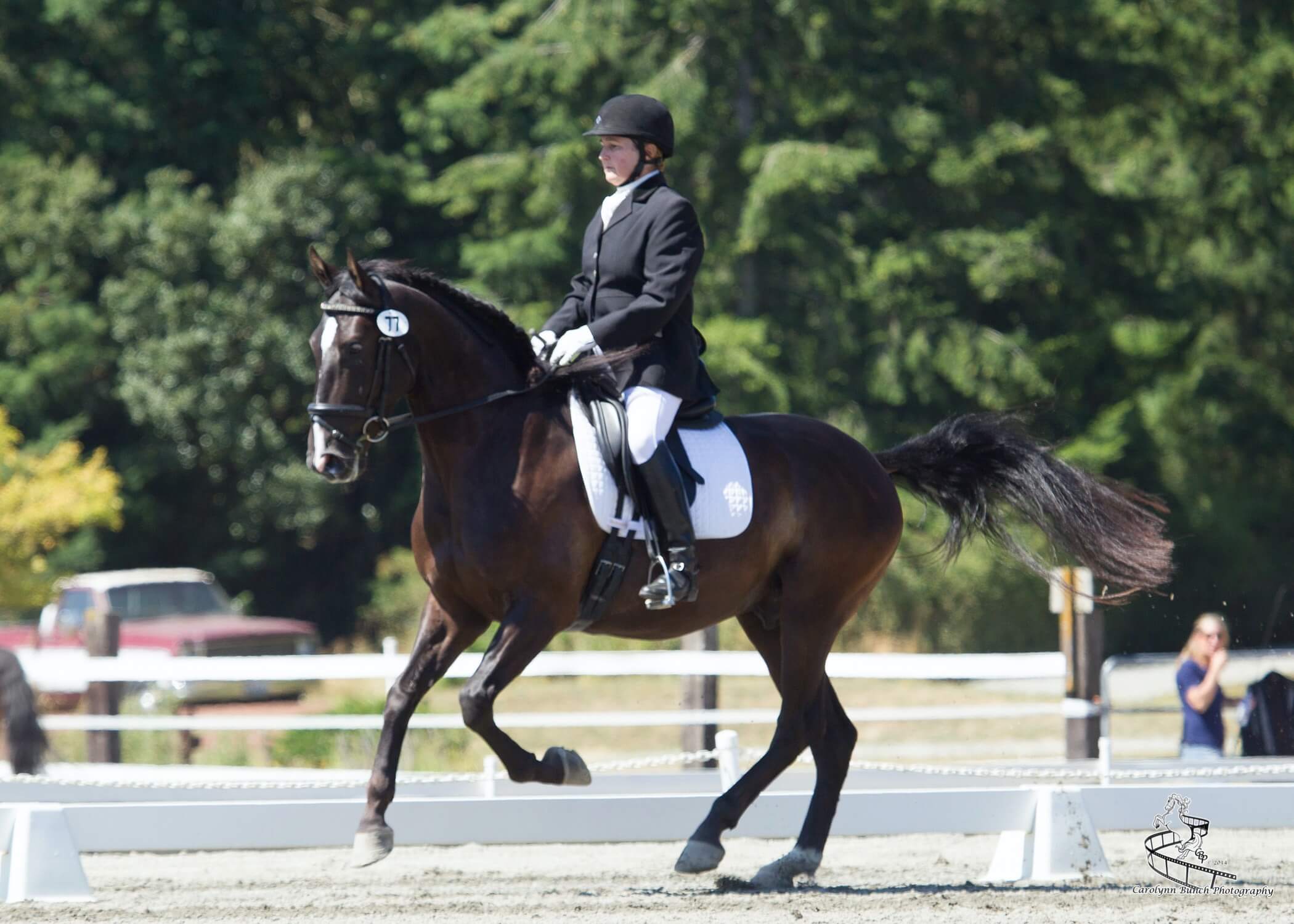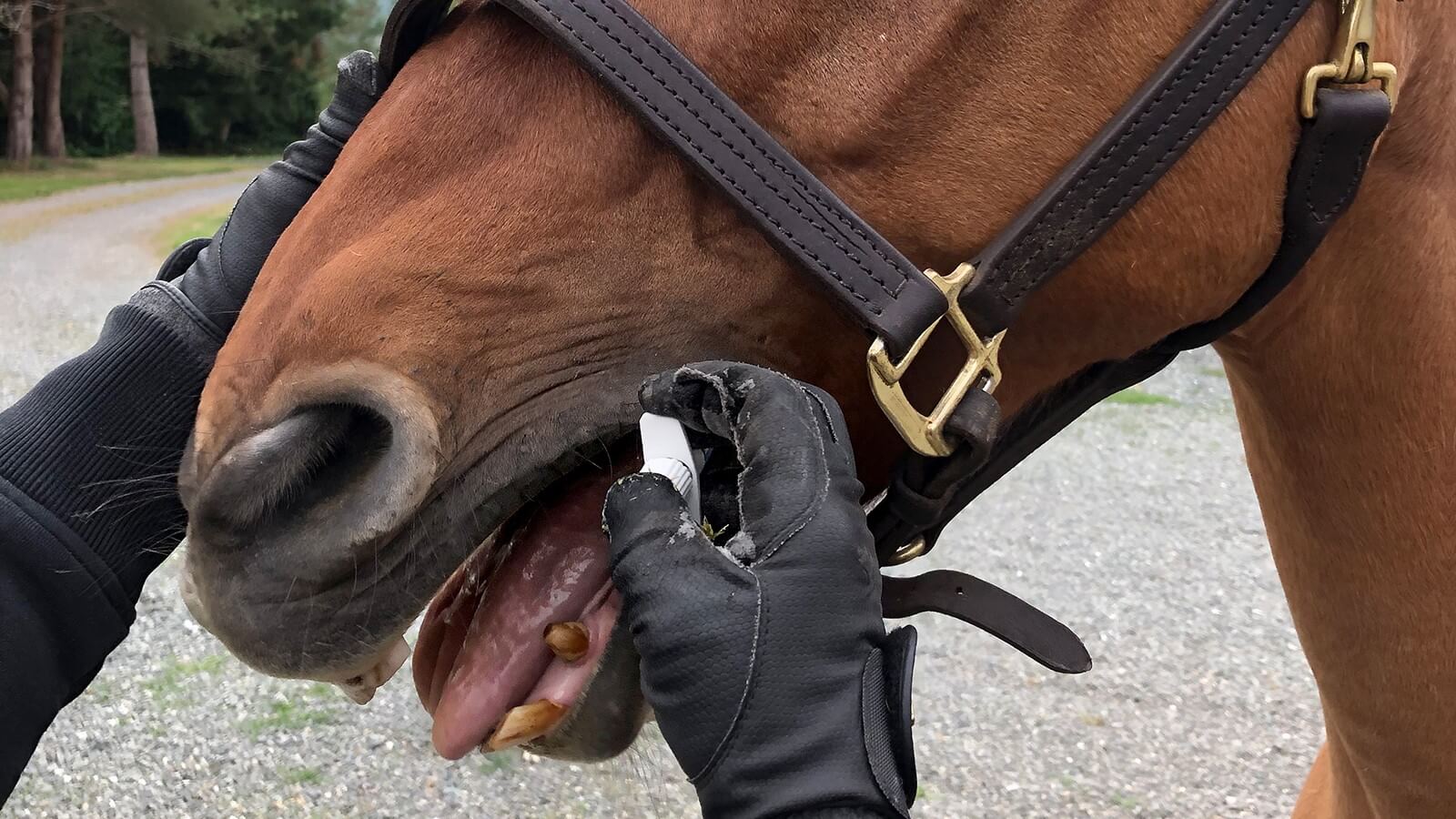I often find myself stepping in and taking over when I see one of my boarders struggling to deworm their horse. Recently, a client was getting into a bit of a scuffle with her gelding while performing this task, so I decided to teach instead of do. After the job was finished, she told me a horror story about the first time she dewormed the first horse she owned. Both the woman and her horse were lucky to not get hurt, and the mare was always difficult to deworm after that and her owner dreaded the job.
Deworming your horse can be a simple act if you prepare your horse and yourself for the job. Here’s how.
- Untie your horse.
It begins here! If your horse won’t stand quietly beside you without being tied, don’t even think about going to the next step. In general, restraining a horse when you’re doing any doctoring isn’t a good idea, and especially when you’re orally dosing with medication. Your horse needs to be comfortable enough with you that when you drop the lead rope he doesn’t head for the hills. Trust is the foundation of all the work we do with horses on the ground and on their backs.
- Train your horse to open his mouth.
 If you plan to use a bridle and bit on your horse, then you need to teach him to accept something in his mouth. If he already does wear a bit when ridden, and willingly opens his mouth to be bridled, you are most of the way there with deworming.
If you plan to use a bridle and bit on your horse, then you need to teach him to accept something in his mouth. If he already does wear a bit when ridden, and willingly opens his mouth to be bridled, you are most of the way there with deworming.
To open the horse’s mouth, hold the halter with your one hand and use your index finger of the other hand to open your horse’s mouth by tickling him in the corner of his lips. Horses don’t have teeth in this spot in their mouths (known as the bars or interdental space) and this is where the bit lies when the horse is bridled.
Be gentle and take care not to poke the horse’s sensitive tissues with your fingernail. Make it as pleasant an experience as possible and praise your horse for being cooperative. Do not use food or treats as this will confuse the horse and make him chew, which is not the idea! Praise greatly and reward the horse with a healthy scratch on an itchy spot.
Do this step as many times as needed before moving on to deworming (or bridling).
- Deworm
 Before deworming be sure your horse’s mouth is empty of any food.
Before deworming be sure your horse’s mouth is empty of any food.
Now, while holding the horse’s halter with your left hand and the deworming tube in your right hand, use a finger on your right hand to open the horse’s mouth (I use my thumb at this point; do not use the dewormer tube to open the horse’s mouth). Once his mouth is open, slide the dewormer tube onto the horse’s tongue, as far back as possible and push in the plunger. Be very careful to not poke the horse’s palate, tongue, or cheeks with the dewormer tube. Be gentle! Move quickly, smoothly, and calmly.
After dispensing the medicine, keep the horse’s head slightly elevated until you see him swallow (a minute or two) so he can’t spit any out. Finally, don’t feed the horse for about 10 minutes so all the medicine has time to dissolve and be swallowed.
Remember to praise your horse. Hurray! That chore is done.
See this article in the September 2021 online edition:

Kim Roe grew up riding on the family ranch and competed in Western rail classes, trail horse, reining, working cow, and hunter/jumper. She trained her first horse for money at 12 years old, starting a pony for a neighbor.
Kim has been a professional dressage instructor in Washington state for over 30 years, training hundreds of horses and students through the levels. In recent years Kim has become involved in Working Equitation and is a small ‘r’ Working Equitation judge with WE United.
Kim is the editor of the Northwest Horse Source Magazine, and also a writer, photographer, and poet. She owns and manages Blue Gate Farm in Deming, Washington where she continues to be passionate about helping horses and riders in many disciplines.






